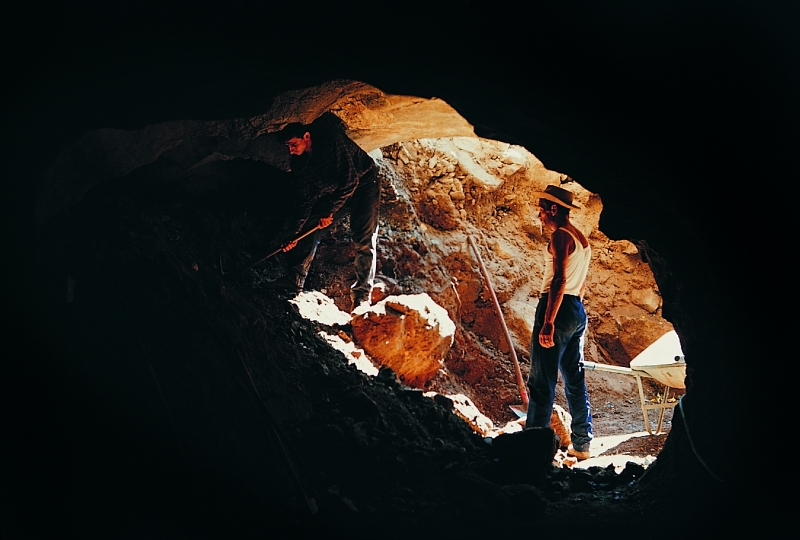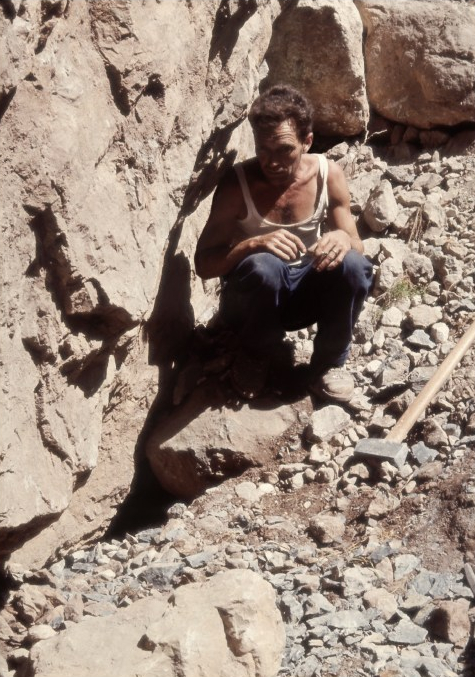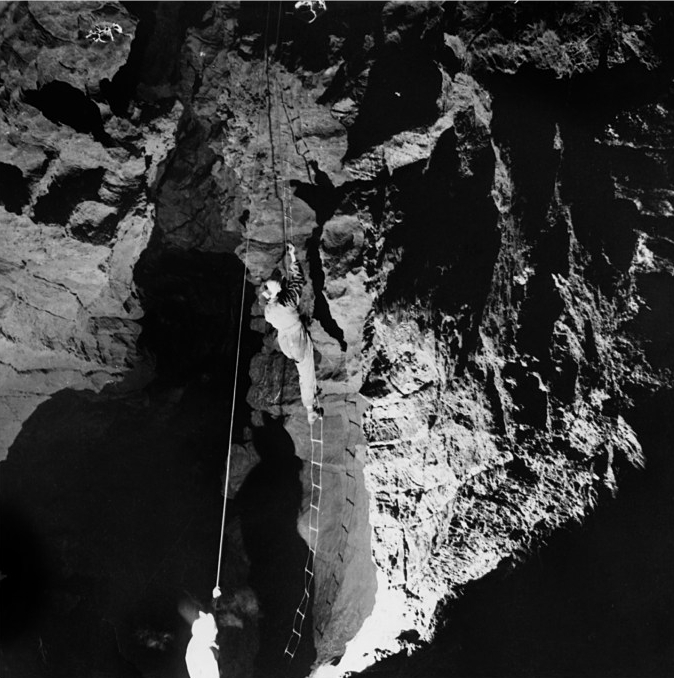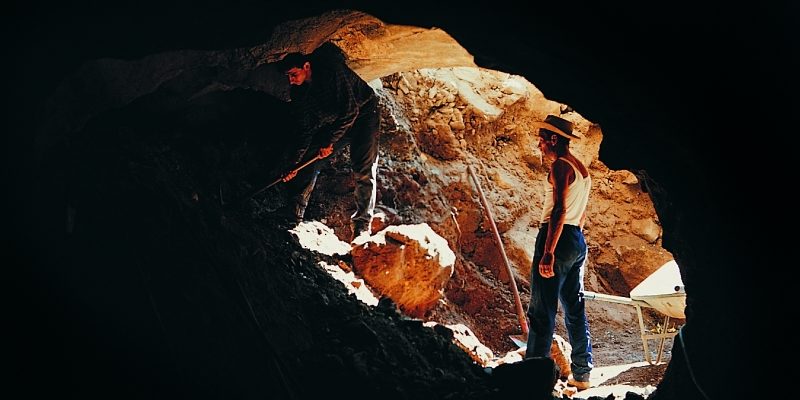
.

1965: Carli Primasio during the work to bring to the light the entrance of the cave.
When in 1964 I went down to the Acheronte area for the first time, today a focal point of the 2nd itinerary, I knew that only the speleologists from Bologna had preceded me, they had explored a good part of the cave three years before in 1961.
What I found out the following year surprised me a lot. Amongst the workers who I had gathered on site for the first work to be done to make the cave accessible to the public there was a certain Carli Primasio, known as Primo, a miner who up until ten years before had worked in the nearby mine of Trimpello on behalf of a mining company from Rome.
He told me that around 1934, together with a group of miners from Fornovolasco, all curious about the solitary explorations of a Florentine speleologist, he went into the Grotta del Vento on more than one occasion, stopping at the edge of an untouched vertical shaft where the sound of an underground river could be heard coming from the bottom.
Being miners they were used to staying underground and were not influenced by the legends and superstitions of those times which still hovered around the world of caves. Intent on continuing the exploration they asked the parish priest of Fornovolasco if they could borrow the ropes from the bell tower and used them to to go down the shaft with the light of acetylene lamps which they used in the mines. An almost epic endevour considering the difficulty of descending a twenty metre drop with only the rope and such a scarce light.
But they did reach the Hall of Acheronte, and Primo’s tale was confirmed by Giuseppe Bertozzi, known as Beppone, who was part of the group. His description of the wide underground environment also corresponded with what I had seen in person.
According to both of them however, the cave ended in the lowest part of the chamber, in a point where the water disappeared between the sand at the bottom and a rock face. When I went down in 1964 the water was still disappearing in the same way, but a least 50 metres further on, after having crossed a wide tunnel and going through another room (The Dome Room). And in the Hall of Acheronte there was a lot of sand.
There can be two explanations: or the group of miners with the weak acetylene light mistook the Hall of Acheronte, the following tunnel and the Dome Room for one single terminal room, or the last part of this succession in that period was full of sand and gravel brought by some big flood. Something similar happened in 1996, during the catastrophic rainfall which on the 19th June 1996 brought death and destruction to Fornovolasco and to Cardoso.
It is also possible that thirty years on the details of the endeavour disappeared into oblivion.
Apart from what was told verbally, unfortunately no written report exists of this courageous endevour. However we have the certainty that the first to reach the bottom of the cave were not the speleologists from Florence, Bologna or Lucca, but the courageous miners from Fornovolasco.

1964: Descent towards the Acheronte during the expedition made by the speleologists from Lucca.








